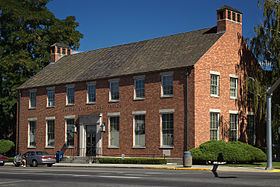Country United States County Okanogan Time zone PST (UTC-8) Metropolitan area 2,686 km² Area code 509 | State Washington Principal cities Omak
Okanogan Elevation 257 m Urban area 12.51 km² | |
 | ||
ZIP codes 98829, 98840, 98841, 98849 | ||
Greater Omak is a metropolitan region consisting of central Okanogan County, Washington, anchored by the cities of Omak and Okanogan. As of the 2010 census, the population was 8,229, representing a population decrease of 2.8 percent over the 2000 census. The surrounding region had 15,690 inhabitants, although it has not officially been designated as a statistical area. It serves as the commercial center for Okanogan County. The mild climate and its close proximity to lakes, rivers, and mountains make Greater Omak an outdoor recreational destination.
Contents
Definitions
The United States Census Bureau defines the Omak, WA Urban Cluster, which serves as the core of its metropolitan region, as the only urbanized area in the Okanogan Country, with a population of 8,229 as of the 2010 census, and an area of 4.83 square miles (12.5 km2), of which 4.74 square miles (12.3 km2) or 98.14 percent is land and 0.09 square miles (0.23 km2) or 1.86 percent is water. Approximately 20 percent of the county's residents live within this area. The statistical region covers the principal cities of Omak and Okanogan, along with its immediately surrounding region.
The metropolitan region surrounding the Omak, WA Urban Cluster, the Greater Omak Area, consists of central Okanogan County, Washington. Although it has not officially been designated as a statistical area by the Office of Management and Budget, it has been stated to encompass a total area of 1,037 square miles (2,690 km2). The area was defined by the postal districts surrounding the urbanized area. This region ranges from Riverside to Malott, with a population of 15,690 as of the 2010 census.
The City of Omak defines the Greater Omak Area as including Omak and its immediately surrounding region, and a small portion of Riverside, at the Omak Airport. The Okanogan County Tourism Council defines the Heart of the Okanogan region as extending into Conconully, serviced already by the Omak School District, with a service area including around 10,481 people at the 2010 census within a total area of 496.8 square miles (1,287 km2). In the 2010 census, the population had more than 16,000 inhabitants.
Geography
The Okanogan River, coming out of the town of Riverside, defines the central portion of the Greater Omak Area; the terrain here is mountainous and hilly. The identity of the term is used to denote the consolidated area. Elevations around the area range from 780 feet (240 m) above sea level at the mouth of Okanogan River to 6,774 feet (2,065 m) above sea level at the Moses Mountain. However, the average elevation is 843 feet (257 m) above sea level according to the United States Geological Survey (USGS).
The Omak, WA Urban Cluster consists of the urbanized centers of Omak and Okanogan, as well as North Omak. It is home to approximately 40 percent of the county's residents. The surrounding metropolitan region includes the less densely populated regions, such as Disautel, with six municipalities or census-designated places (CDP) in the area.
Demographics
As of the 2010 United States Census, there were 8,229 people, 3,339 households, and 2,077 families residing in the Omak, WA Urban Cluster. The population density was 1,737 inhabitants per square mile (670.7/km2). There were 3,560 housing units, with a racial makeup of 81.3 percent White, 10.9 percent Indian, 0.4 percent African American, 0.3 percent Asian, 0.1 percent Native Hawaiian, 4.3 percent from other races, and 2.7 percent from two or more races. Those of Hispanic or Latino of any race made up 7.5 percent of the population.
There were 3,339 households out of which 16.17 percent were married couples living together, 25.1 percent had a female householder with no husband present, and 15.34 percent were non-families. Approximately 13 percent of all households were made up of individuals, 27.69 percent had two or more inhabitants, and 16.98 percent had someone living alone who was 65 years of age or older. The average household size was 2.49 and the average family size was 3.02.
In the Omak, WA Urban Cluster, the population was spread out with 24.78 percent under the age of 18. The median age in the area was 38.7, while the gender makeup was ruled by female at 51 percent versus 49 percent. The United States Census Bureau's 2007–2011 American Community Survey showed that the median household income was $36,601 and the median family income was $41,900. Males had a median earning of $37,610 versus $27,708 for females.
